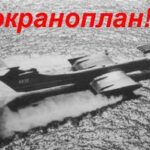Europe and Russia have two very interesting landforms located in the northern regions of the world. Europe’s mountain range, such as, the Alps form the highest mountain ranges of Europe, with the highest peak being 13,000ft high. The Sierra Nevada located in southern Spain, the Pyrenees mountain range located between France and Spain, the Apennines, which outline the Italian peninsula, and the Carpathian Mountains, which are located in Slovakia; all highlight Europe’s mountainous landscape.
Russia’s mountain ranges are more scattered throughout the land. The snowcapped mountains of Russia include the Caucasus Mountains between the Black and Caspian Seas. These mountain ranges rise above 24,000ft with peaks that are over 10,000ft.
Europe is decorated with many peninsulas. Most of the peninsulas are located in Spain, Norway, Sweden, Italy, Southern Greece, France, Denmark, and Portugal. The seas that surround Europe’s peninsulas, small islands, and region include the Celtic Sea, located in the west, North Sea (N.W.), Norwegian Sea (North), Baltic Sea (N.E. from Denmark to Estonia), Black Sea (S.E.), Adriatic Sea (South), Ionia Sea (S.E.), Tyrrhenian Sea (S.W. of Italy), Balearic Sea (E. of Spain), and the Mediterranean Sea (South of Spain). The Atlantic Ocean is just to the West of Europe.
Seas that surround the Russian border include: Black Sea (West), Caspian Sea, located between the Caucus Mts. and Kara Kum Desert, the Baltic Sea (between Helsinki and Tallinn), Barents Sea (North), Kara Sea (North), Laptev Sea (North), East Siberian Sea (N.E.), Bering Sea (East), and Sea of Okhotsk (East). The Artic Ocean surrounds the Northern part of Russia.
River valleys throughout Europe are of very high importance. The Rhone, Seine, Thames, and Vistula Rivers are used for trade of goods throughout the region of Europe. The Danube River is the longest running river in the region and the Rhine River is Europe’s second largest river. There are many rivers in Russia, such as, Irtysh River and the Angara River; however, plains and low plateaus mostly dominate this region. The Desert located in the southern region of Russia transforms into Steepe grassland to deciduous and coniferous forests into tundra off the Artic Ocean. Russia mostly consists of Pine and Fir, and Larch forests. The middle of Russia consists of Steepe and southern Russia consists of mostly desert.
Europe’s climate ranges from icy winters to hot summers. Norway, Sweden, and Finland are very far north so they have what is called polar climates; this climate is typical of the polar region. The western countries have mainly mild winters and warm summers. Dry air from the Sahara brings Mediterranean climate to the southern regions of Europe. Midlatitude continental interior climate effects Central and Eastern Europe. This effect brings extremely cold winds with freezing temperatures from Russia.
Russia’s climate can be more extreme than Europe’s. The reason for this extreme weather condition is because this region is the farthest from any major bodies of water. This makes Russia’s winters extremely cold and summers extremely hot. This is called continentality. The warmest climates in Russia are around the Black and Caspian Seas.
Europe has great advantages when it comes to the trading of goods throughout the region. For instance the Danube River may not be used as much as the Rhine River is for trade, however, this river flows through more countries than any river in the world. The Rhine River is the world’s busiest waterway. The Mediterranean Sea is one of the major shipping lanes in the world. The Atlantic Ocean is another way for Europe to export and import goods with America and other countries. Russia may not have as many river ways as Europe and because of the extreme weather conditions; this region is less involved in trade. From my own perspective, I believe that much of the trade that is done throughout Russia consists of air travel and trains.


